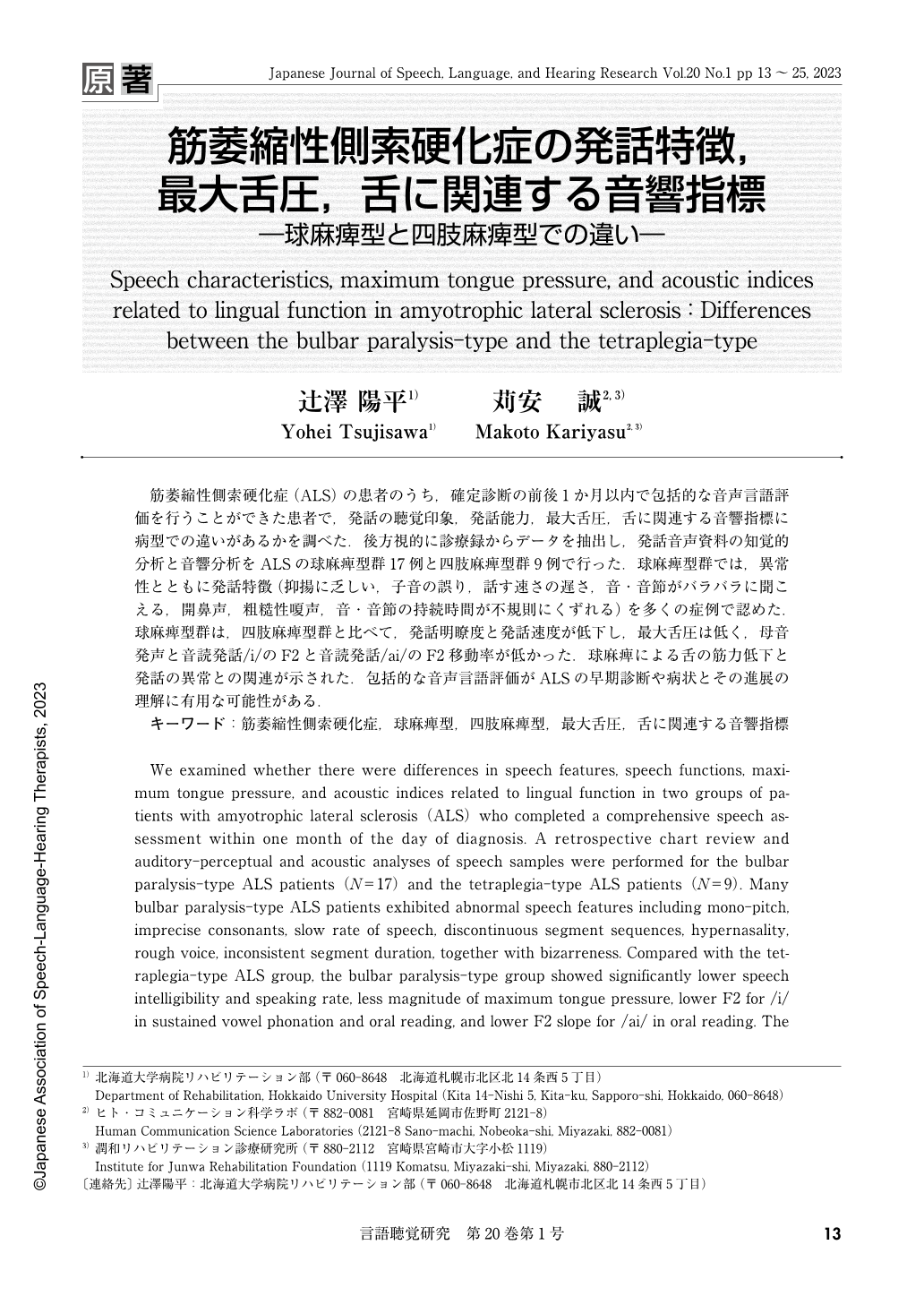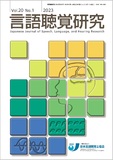Japanese
English
- 有料閲覧
- Abstract 文献概要
- 1ページ目 Look Inside
- 参考文献 Reference
- サイト内被引用 Cited by
筋萎縮性側索硬化症(ALS)の患者のうち,確定診断の前後1か月以内で包括的な音声言語評価を行うことができた患者で,発話の聴覚印象,発話能力,最大舌圧,舌に関連する音響指標に病型での違いがあるかを調べた.後方視的に診療録からデータを抽出し,発話音声資料の知覚的分析と音響分析をALSの球麻痺型群17例と四肢麻痺型群9例で行った.球麻痺型群では,異常性とともに発話特徴(抑揚に乏しい,子音の誤り,話す速さの遅さ,音・音節がバラバラに聞こえる,開鼻声,粗糙性嗄声,音・音節の持続時間が不規則にくずれる)を多くの症例で認めた.球麻痺型群は,四肢麻痺型群と比べて,発話明瞭度と発話速度が低下し,最大舌圧は低く,母音発声と音読発話/i/のF2と音読発話/ai/のF2移動率が低かった.球麻痺による舌の筋力低下と発話の異常との関連が示された.包括的な音声言語評価がALSの早期診断や病状とその進展の理解に有用な可能性がある.
We examined whether there were differences in speech features, speech functions, maximum tongue pressure, and acoustic indices related to lingual function in two groups of patients with amyotrophic lateral sclerosis (ALS) who completed a comprehensive speech assessment within one month of the day of diagnosis. A retrospective chart review and auditory-perceptual and acoustic analyses of speech samples were performed for the bulbar paralysis-type ALS patients (N=17) and the tetraplegia-type ALS patients (N=9). Many bulbar paralysis-type ALS patients exhibited abnormal speech features including mono-pitch, imprecise consonants, slow rate of speech, discontinuous segment sequences, hypernasality, rough voice, inconsistent segment duration, together with bizarreness. Compared with the tetraplegia-type ALS group, the bulbar paralysis-type group showed significantly lower speech intelligibility and speaking rate, less magnitude of maximum tongue pressure, lower F2 for /i/ in sustained vowel phonation and oral reading, and lower F2 slope for /ai/ in oral reading. The findings suggest that the lingual weakness associated with bulbar palsy is closely related to abnormal speech features and reduced speech functions in ALS. Thus, a comprehensive speech assessment may be useful for making an early diagnosis of ALS and for understanding the state and progression of the disease and physical conditions.

Copyright © 2023, Japanese Association of Speech-Language-Hearing Therapists. All rights reserved.


